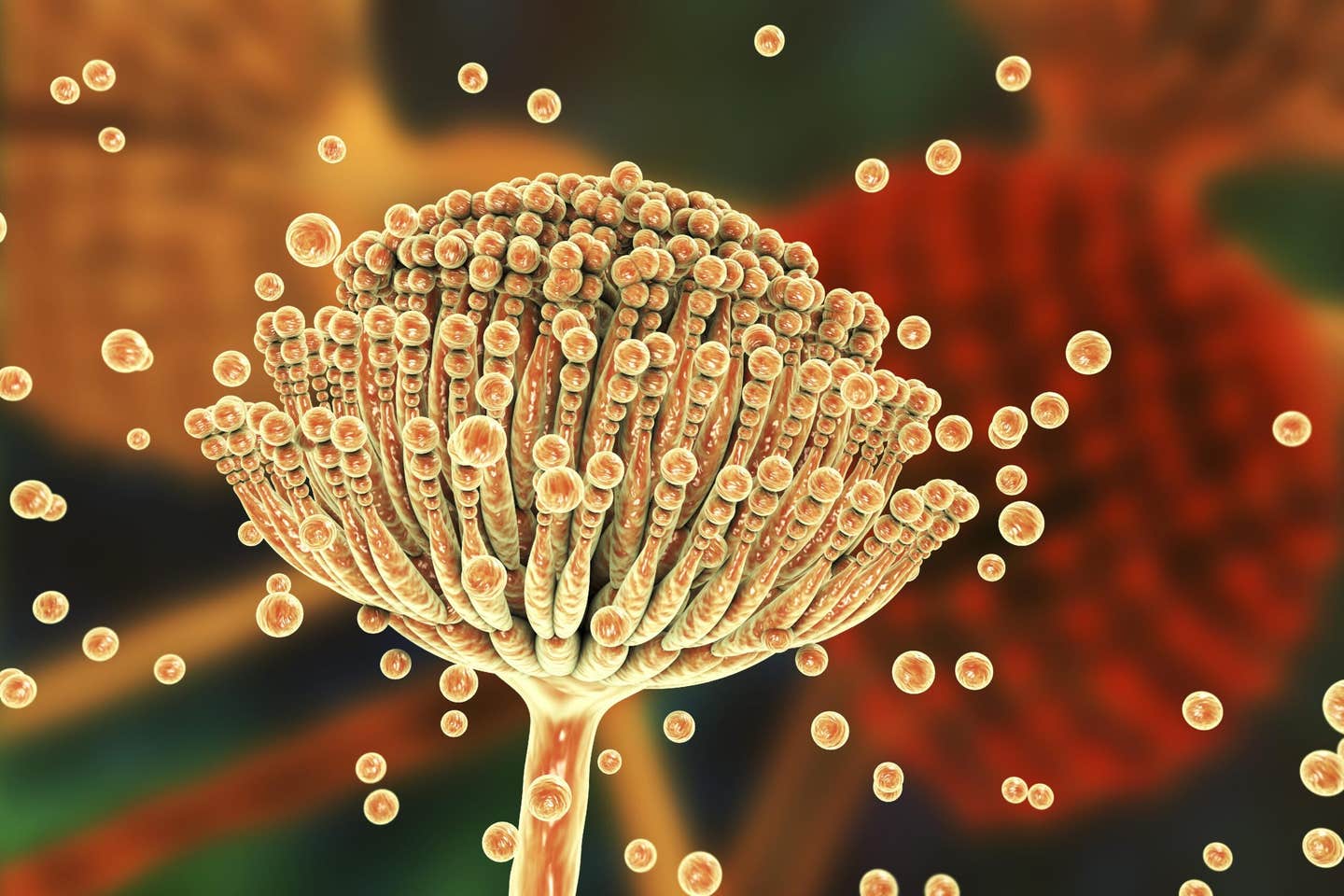Climate change is fueling a global fungal health crisis
Fungal pathogens are known for their ability to infect humans, livestock, and crops, causing severe health and economic impacts worldwide.

Scientists warn climate change is expanding dangerous fungal pathogens worldwide. (CREDIT: CC BY-SA 4.0)
Fungal pathogens like Aspergillus species are known for their ability to infect humans, livestock, and crops, causing severe health and economic impacts worldwide. Rising global temperatures now threaten to expand their range, bringing these dangerous fungi into areas previously untouched.
Scientists from the University of Manchester have predicted significant shifts in the global distribution of these pathogens, emphasizing the urgent need for greater awareness and preparation.
Widespread Threat of Aspergillus
Aspergillus fungi are incredibly adaptable, thriving both indoors and outdoors across many climates. Every day, you unknowingly inhale hundreds of their microscopic spores, each measuring only 2-3 micrometers. Normally, these spores pose no harm, cleared easily by healthy immune systems. But for those with weakened immunity or existing lung conditions, inhalation can lead to serious diseases.
Two primary forms of Aspergillus infections occur: chronic pulmonary aspergillosis (CPA) and invasive aspergillosis (IA). CPA establishes in existing lung cavities and can persist long-term, affecting around 1.8 million people annually, causing approximately 340,000 deaths globally. IA is even more severe, resulting when spores spread from the lungs into the bloodstream, infecting around 2.1 million people each year and causing 1.8 million deaths.
Climate Change Alters Fungal Range
Researchers have focused on three key species: Aspergillus fumigatus, Aspergillus flavus, and Aspergillus niger. Each prefers different climates, with A. fumigatus dominant in cooler, temperate regions and A. flavus and A. niger thriving in warmer areas. Using advanced modeling tools and data from the GlobalFungi database, scientists predict significant northward expansions in suitable habitats for these fungi, driven by climate change.
"Changes in environmental factors, such as humidity and extreme weather events, will change habitats and drive fungal adaptation and spread," said Dr. Norman van Rhijn from the University of Manchester. "Fungi are incredibly adaptable organisms, with large, malleable genomes that allow them to colonize new geographies and survive as their environment changes."
Related Stories
Under severe climate change scenarios, such as continued reliance on fossil fuels (the SSP585 scenario), Europe could experience dramatic increases in fungal infections. Projections indicate a 16% increase in habitat suitability for A. flavus, potentially exposing an additional 1 million Europeans. More alarmingly, A. fumigatus could expand its suitable habitat by 77.5%, placing 9 million more people at risk.
Growing Concerns in Agriculture
These fungi don't only threaten human health; they also severely impact agriculture, essential for feeding a growing global population. Black Aspergillus species, including A. niger, and Aspergillus flavus significantly reduce crop yields and contaminate harvests with harmful mycotoxins.
The financial impact of such contamination is stark. In the U.S., aflatoxin contamination from A. flavus alone could cost the corn industry between $52 million and $1.68 billion annually. Climate events like those in 2012 already provide clear examples of how quickly and severely fungal outbreaks can affect food security and economic stability.
Viv Goosens, Research Manager at Wellcome, highlighted the urgent need for research, stating, "Fungal pathogens pose a serious threat to human health by causing infections and disrupting food systems. Climate change will make these risks worse."
Resistance to Treatment Complicates Matters
Treating fungal infections is increasingly complicated due to resistance. Azole antifungals, frontline drugs used for treating aspergillosis, closely resemble agricultural fungicides. Extensive use of fungicides in farming has accelerated resistance in environmental Aspergillus populations, leading directly to resistant human infections.
"This is especially concerning," explained Dr. van Rhijn. "Many fungal infections have high mortality rates, partly because of the lack of diagnostics, vaccines, and effective treatment options, and partly due to limited awareness."
Moreover, fungi share greater genetic similarities with humans compared to other pathogens, complicating treatment options. New antifungal drugs must selectively target fungal cells without harming human cells, an ongoing and significant challenge.
Adapting to an Emerging Health Crisis
As fungal pathogens expand geographically, new areas face infection risks that previously did not exist. Northern European countries, historically spared severe fungal threats, may soon contend with outbreaks common to warmer climates.
In Africa, meanwhile, higher temperatures could eventually reduce fungal viability, disrupting ecosystems where fungi play essential roles in nutrient recycling and climate regulation.
"We've already seen fungi like Candida auris emerging due to rising temperatures," noted Dr. van Rhijn. "These new maps clearly indicate other fungi might similarly respond, affecting global health substantially."
Research and Preparedness Are Key
Despite these threats, fungal pathogens remain vastly understudied. Less than 10% of estimated fungal species are described, and fewer have their genomes sequenced. Wellcome has allocated over £50 million towards fungal research, aiming to bridge this critical knowledge gap.
"By using models and maps to track the spread of fungi, we can better direct resources and prepare for the future," Goosens emphasized.
This growing awareness underscores the importance of early action, effective public health responses, and agricultural adaptations. Climate change’s effect on fungal pathogens represents a global health and food security challenge demanding immediate attention and proactive strategies.
Research findings are available online in the preprint platform Research Square.
Note: The article above provided above by The Brighter Side of News.
Like these kind of feel good stories? Get The Brighter Side of News' newsletter.



